Rare! Original 1967 Apollo Program "Emergency Launch System (ELS) Equipment & Abort Vehicle Mechanics" 1st Edition NASA Astronaut Training Document*

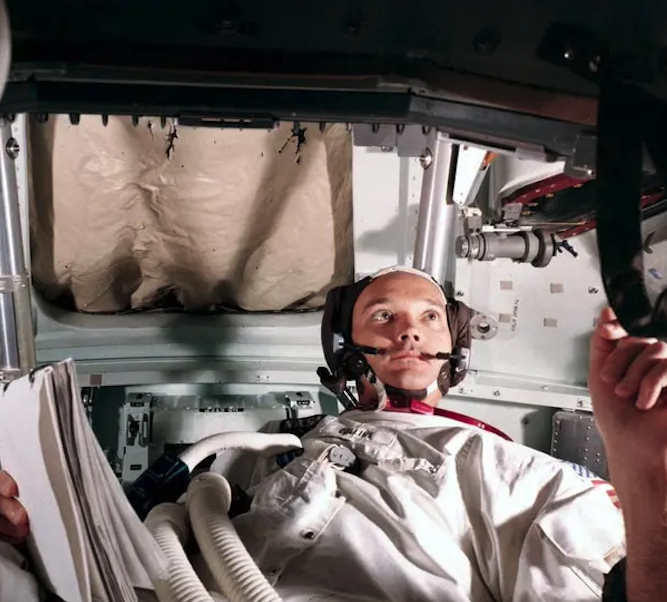


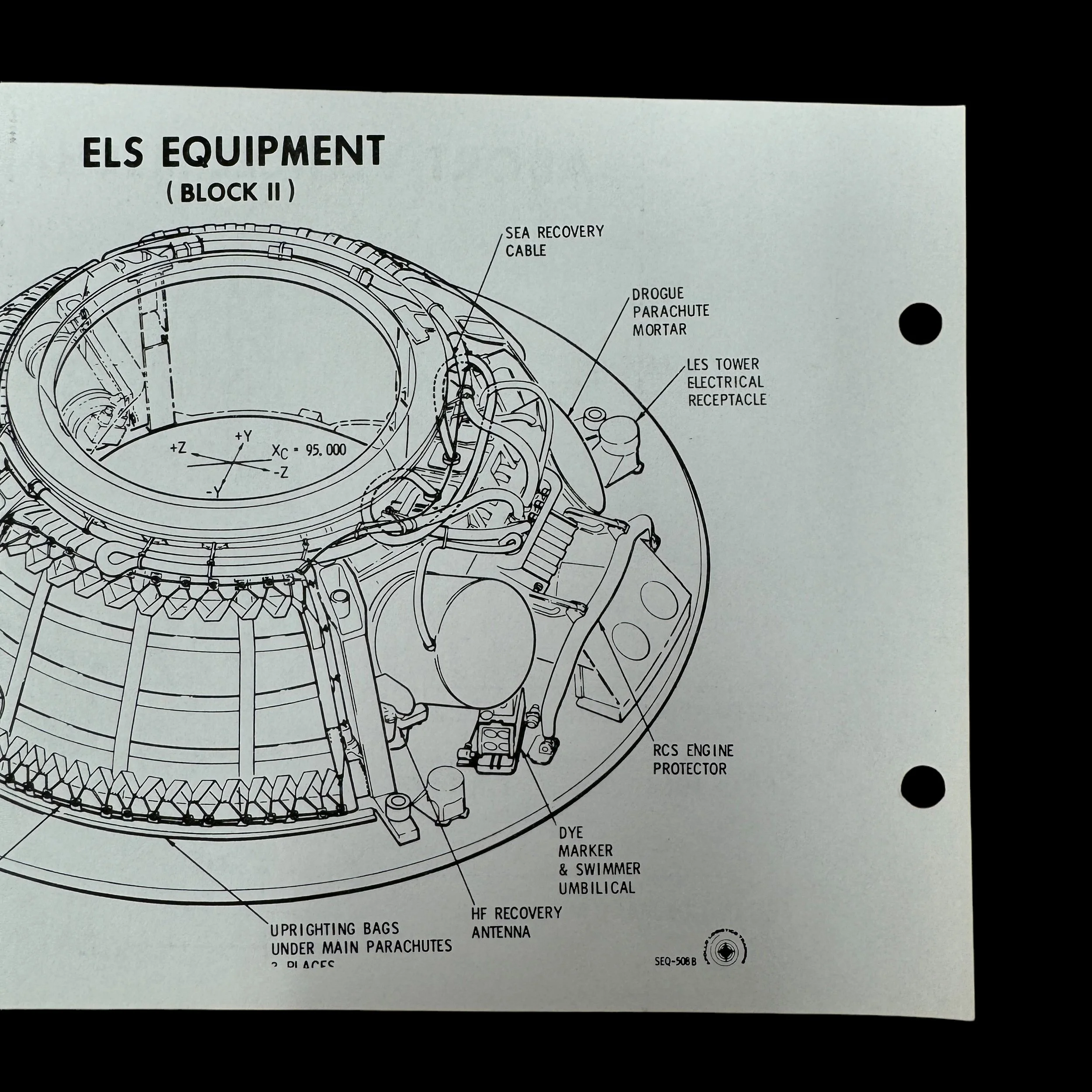
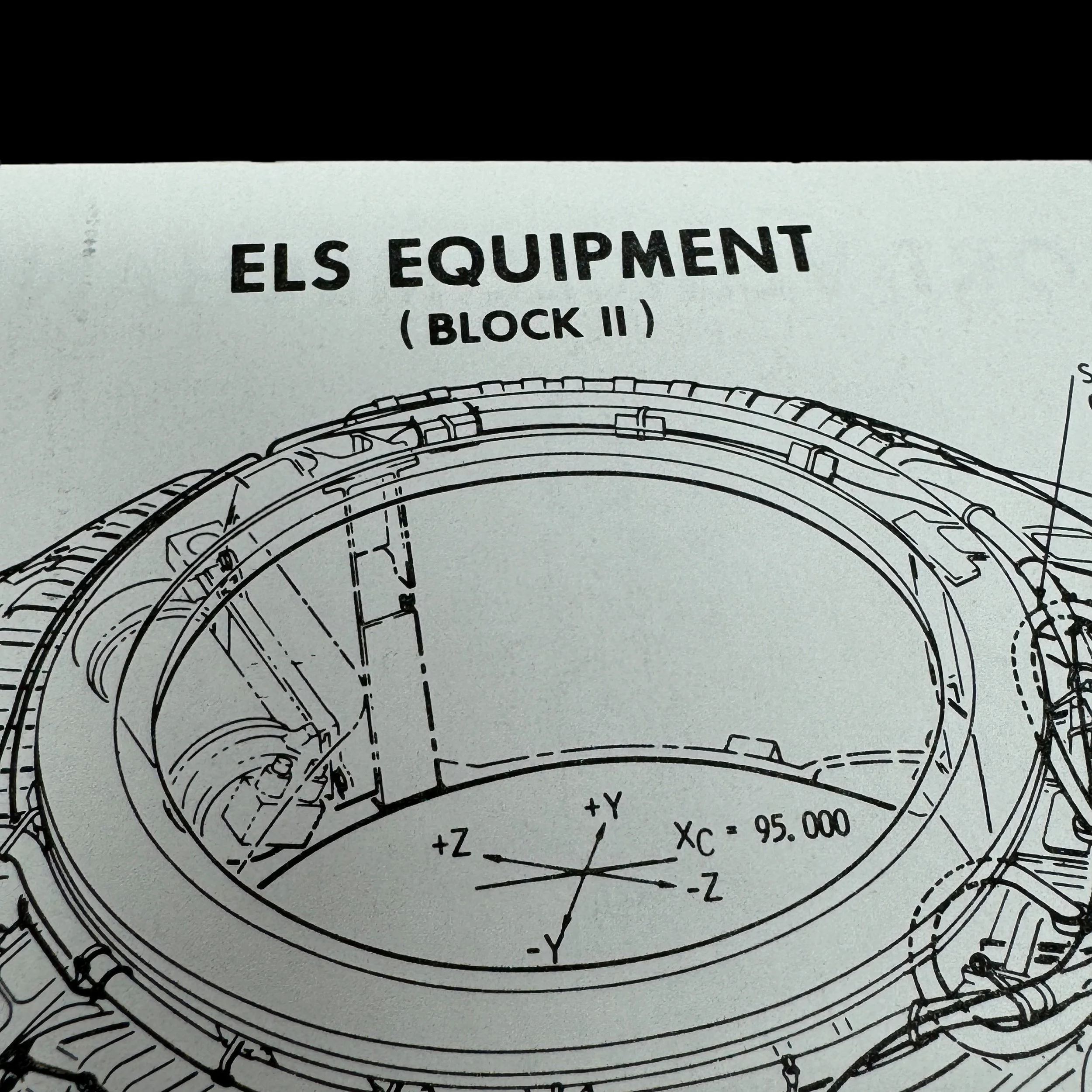
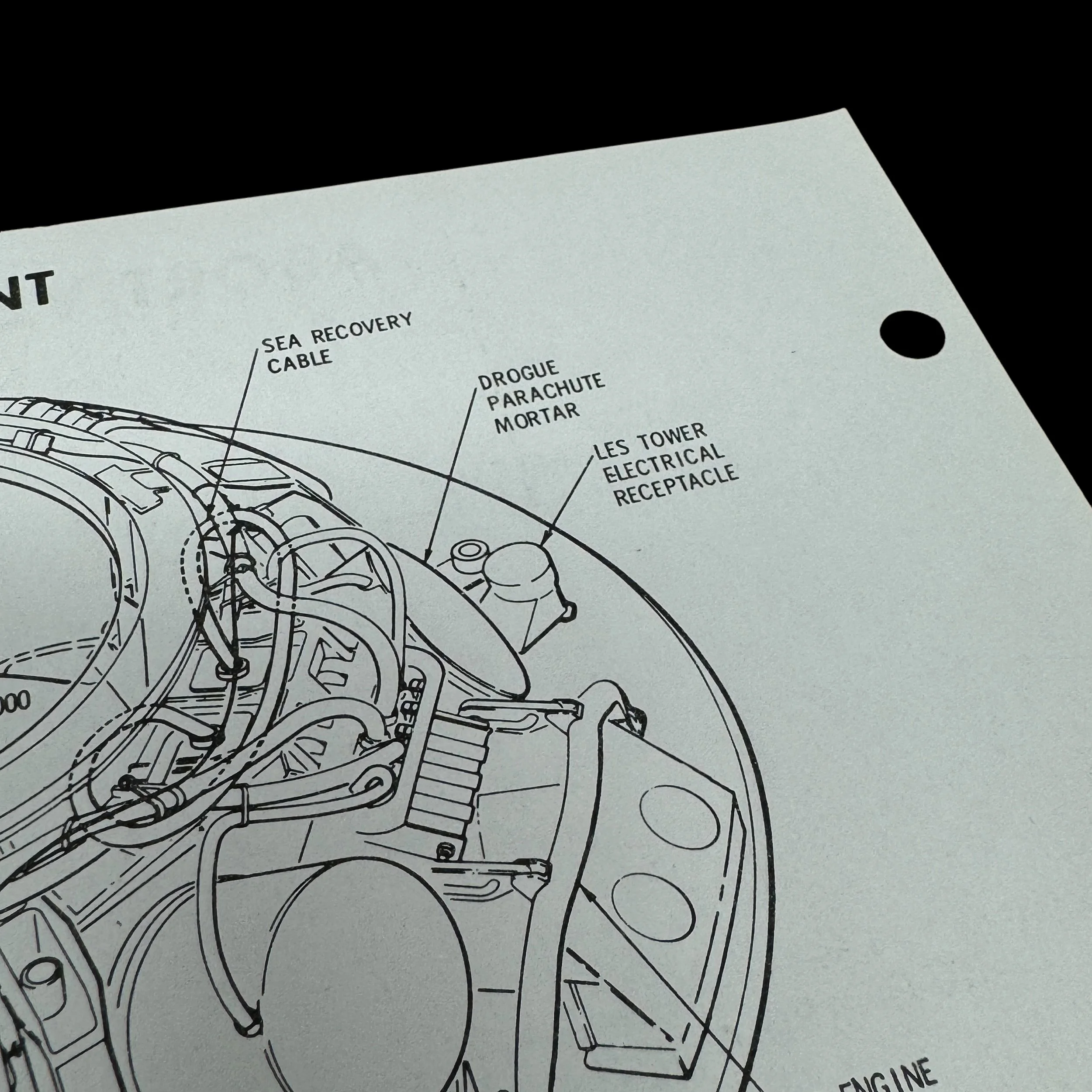
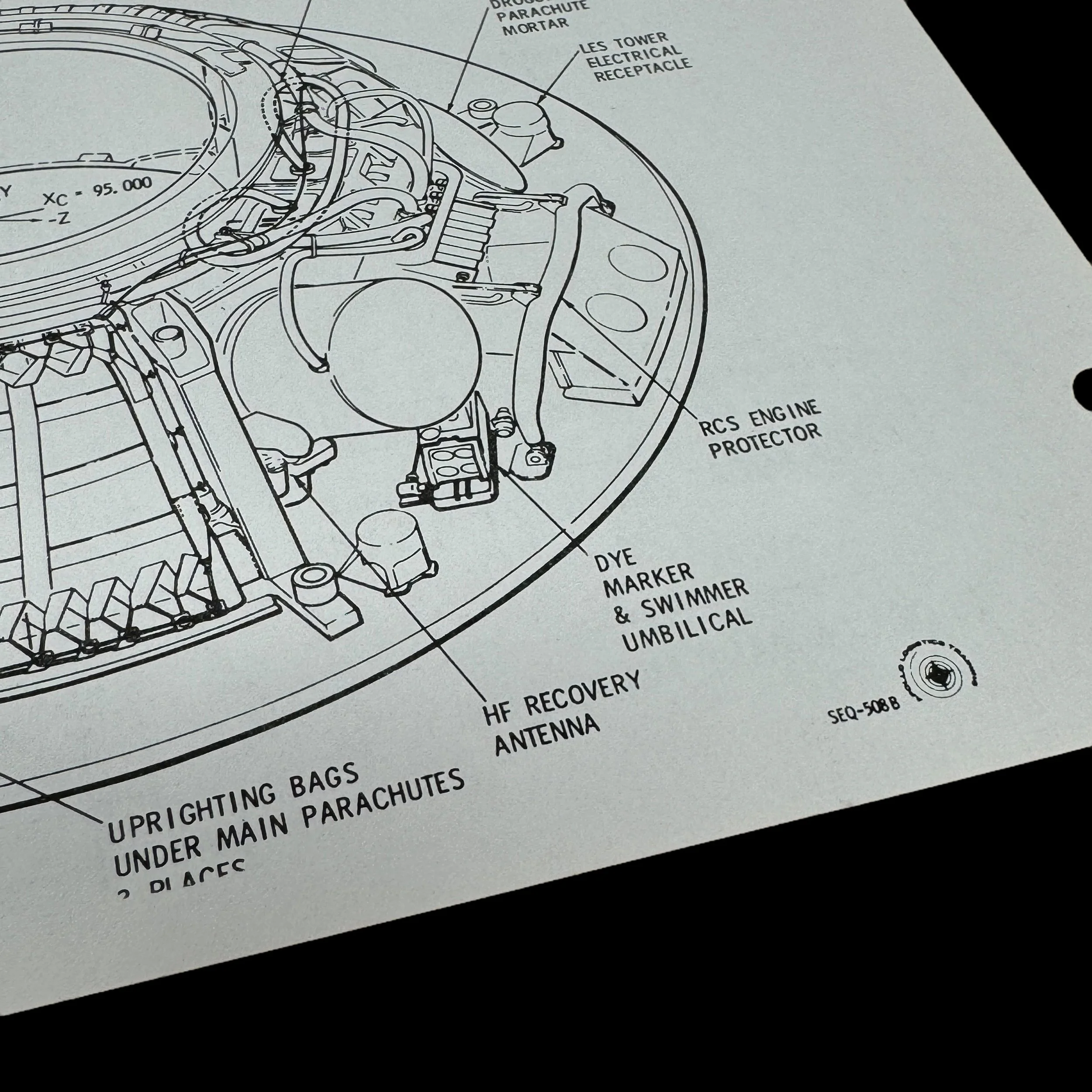
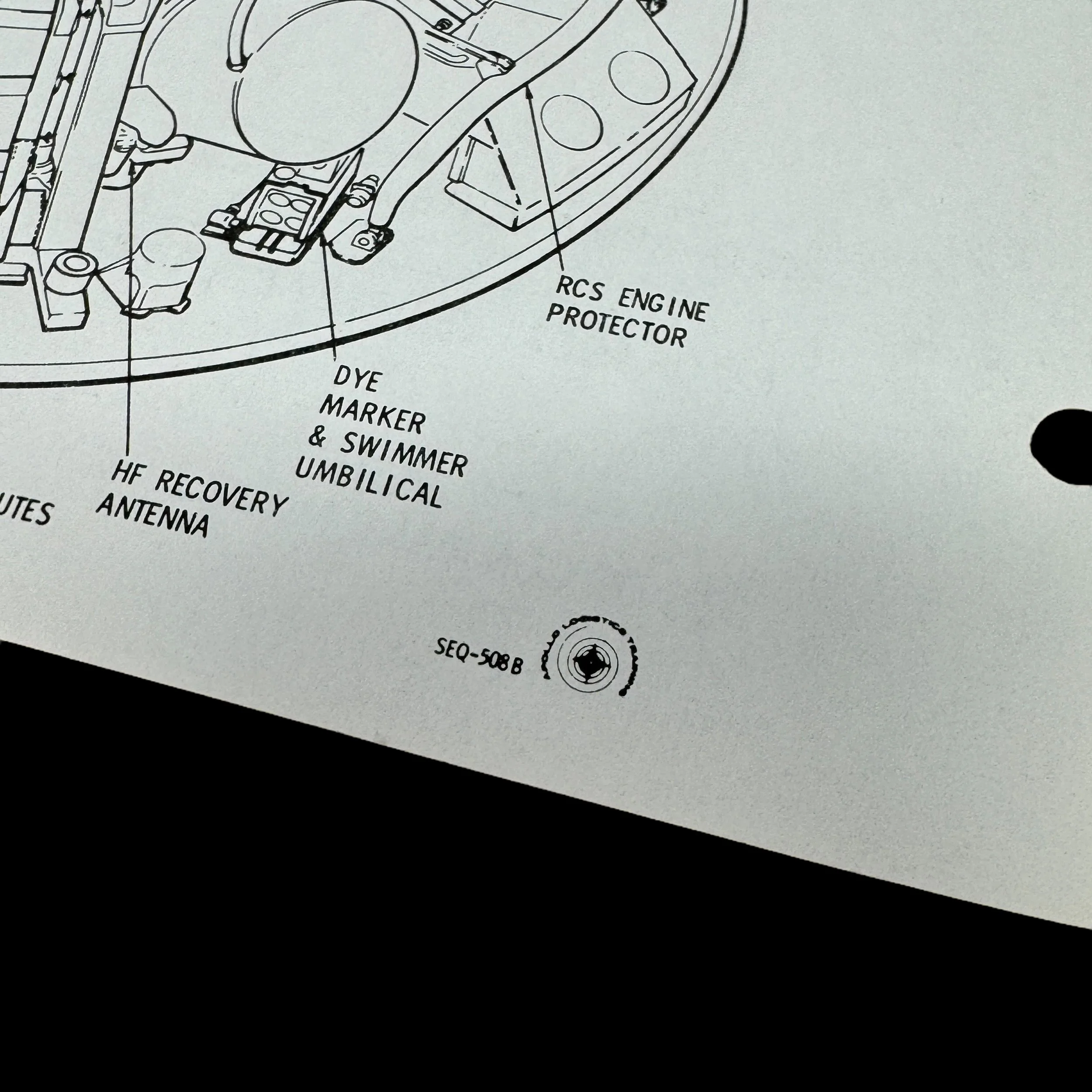
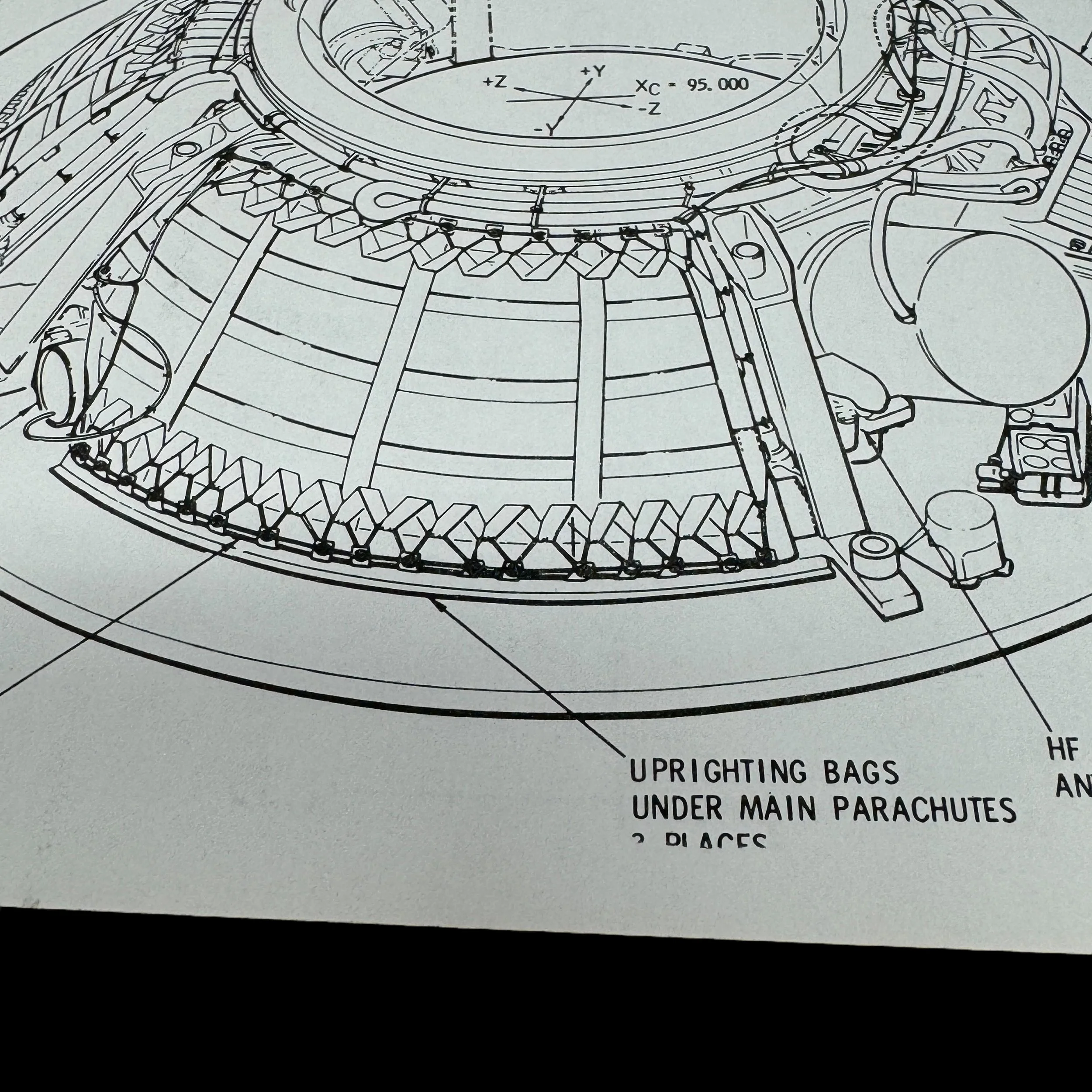
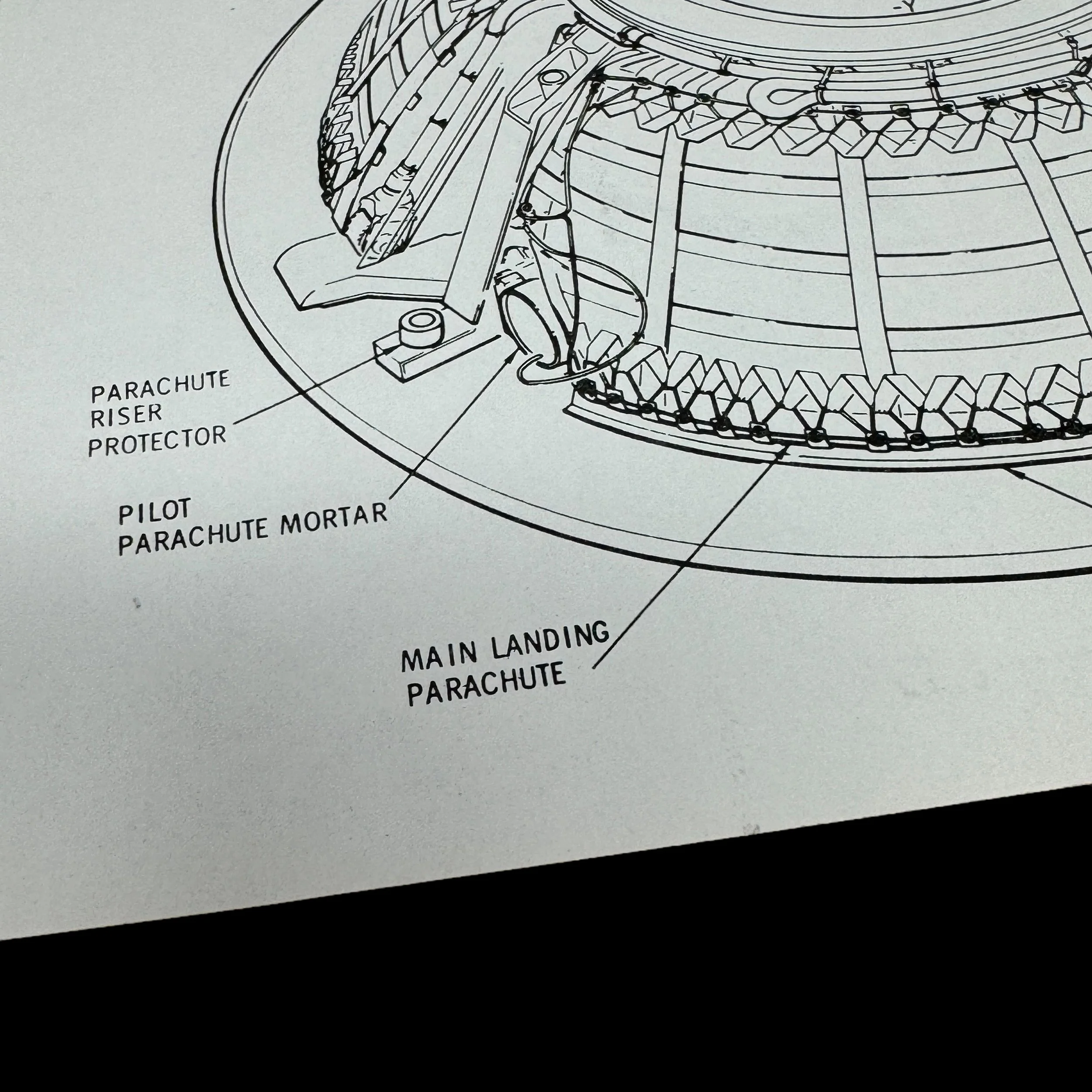

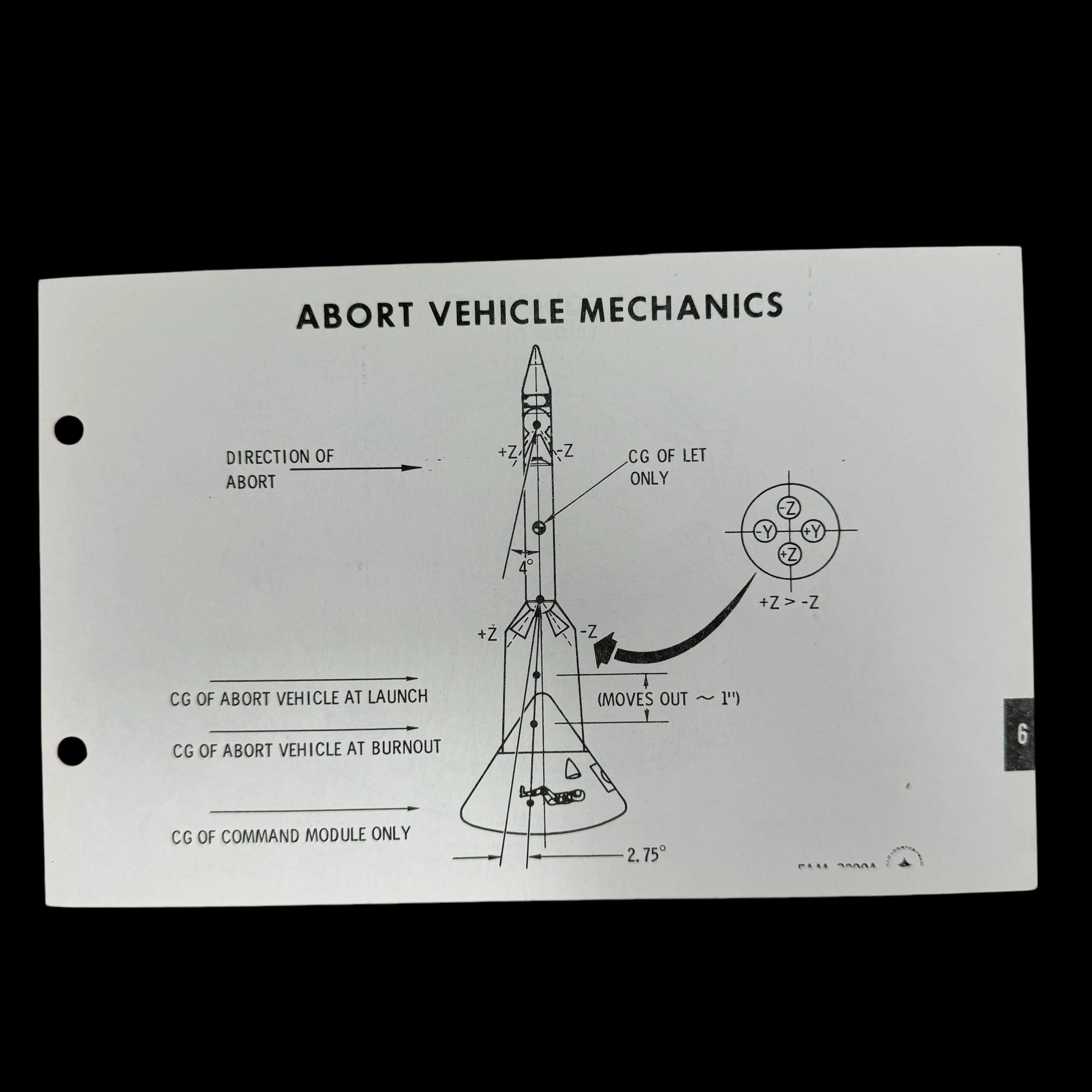
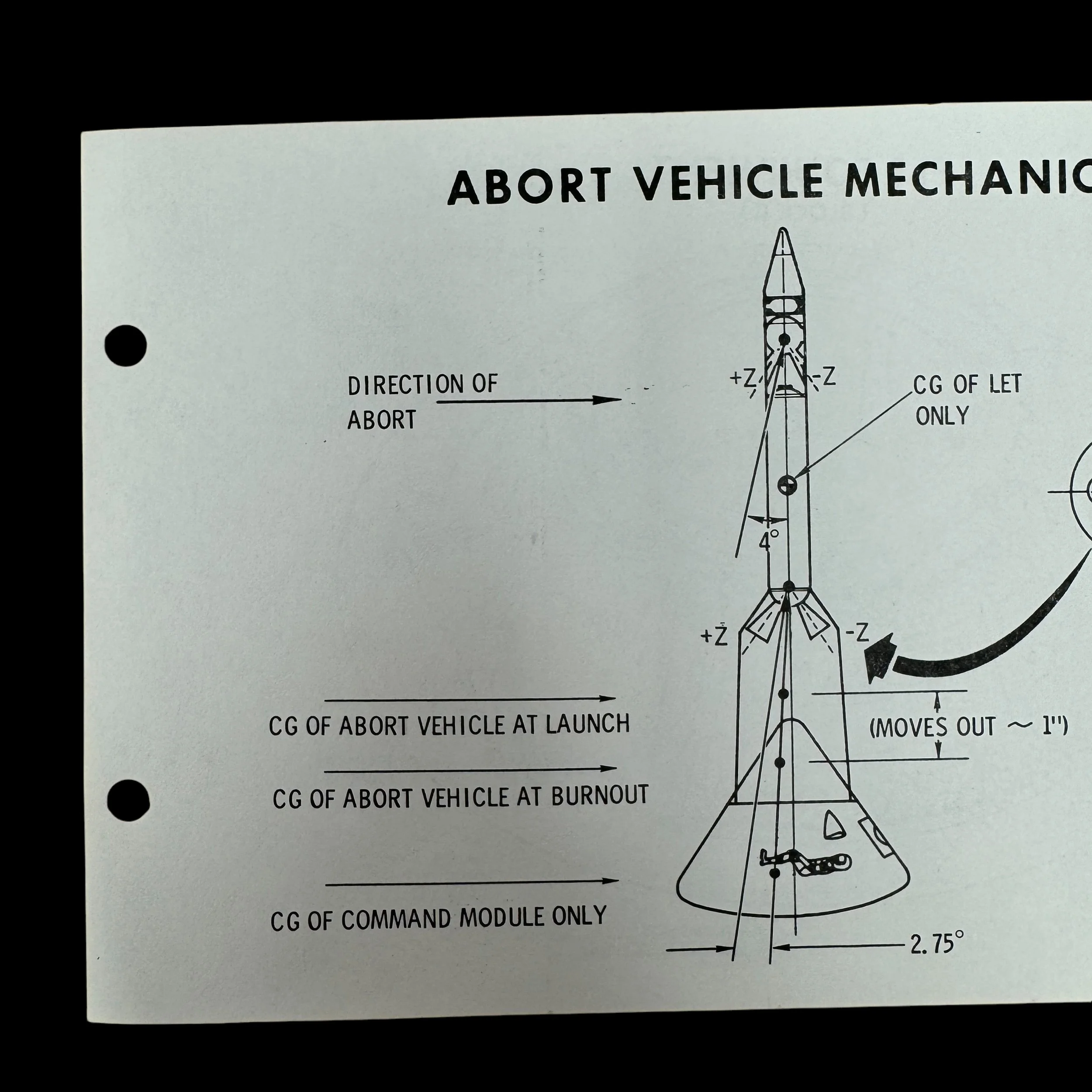
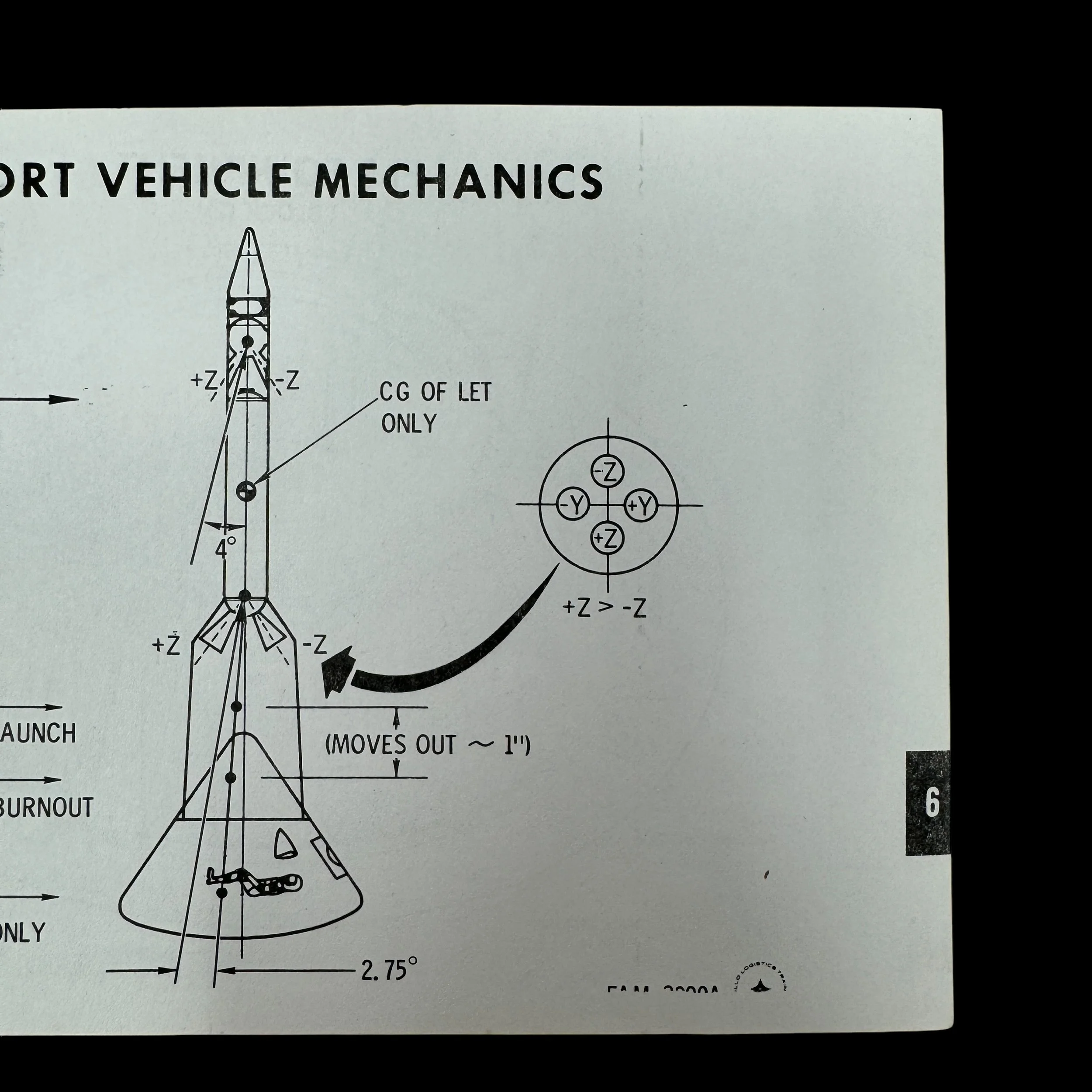
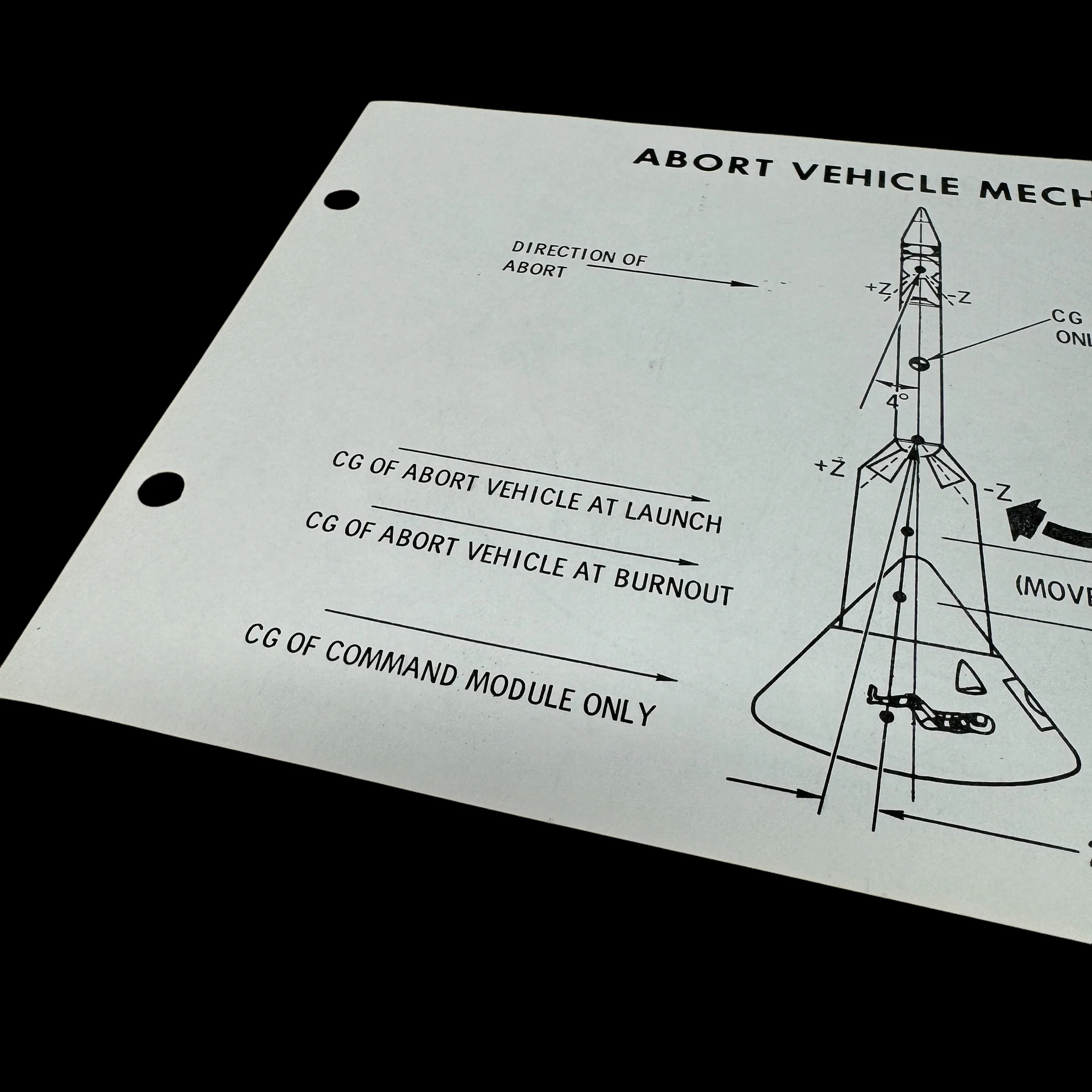
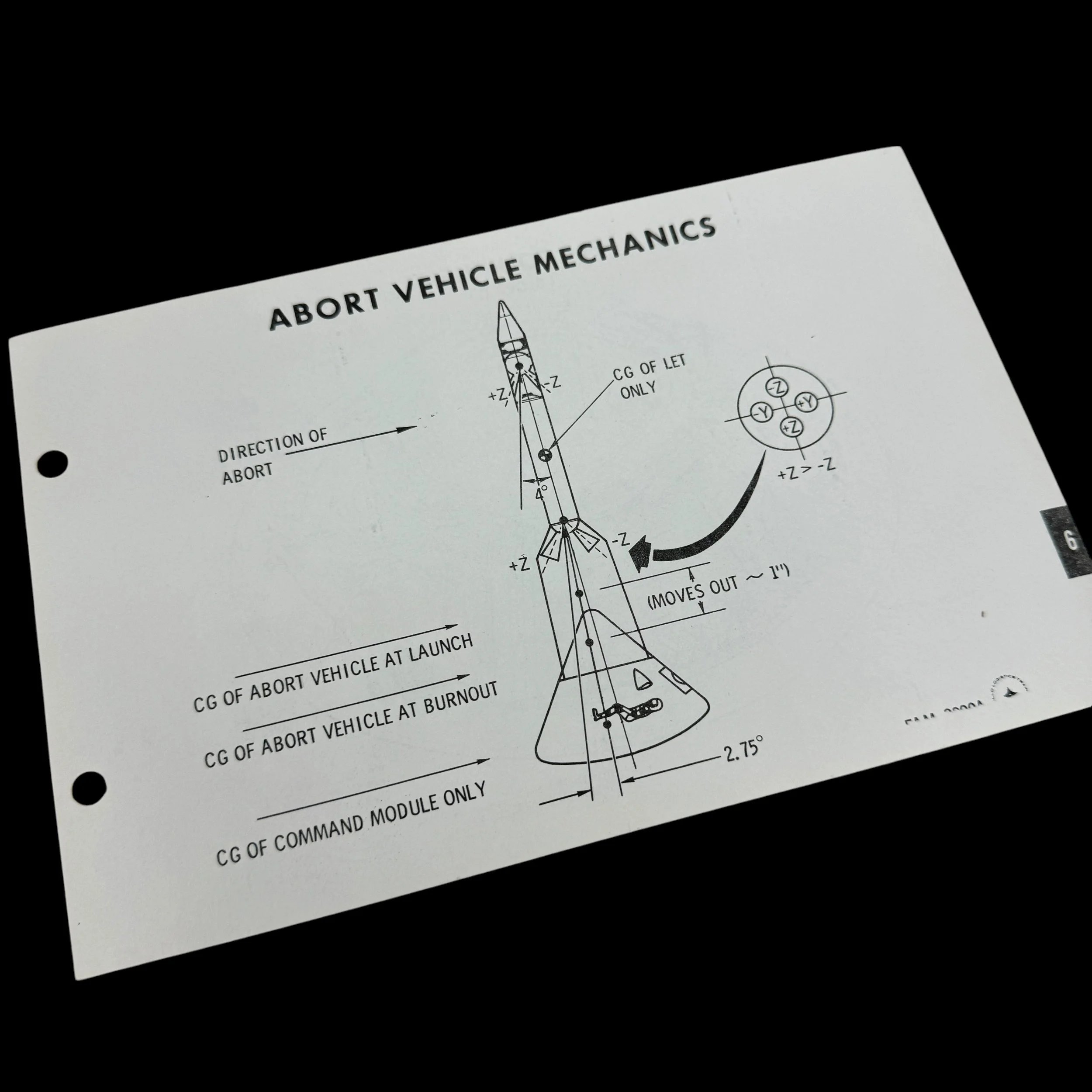
Rare! Original 1967 Apollo Program "Emergency Launch System (ELS) Equipment & Abort Vehicle Mechanics" 1st Edition NASA Astronaut Training Document*
Comes with a hand-signed C.O.A. and a full historical research write-up
Size: 5.5 x 8.5 inches
From: Apollo Program (NASA) - Emergency Launch System (ELS) Equipment & Abort Vehicle Mechanics
Dated: 1967
This extraordinary and highly sought-after piece of space history is an original, double-sided Apollo Program astronaut training document produced by NASA in 1967. Used by legendary U.S. Apollo astronauts, this document was a crucial tool for studying and mastering the operations and equipment the Apollo astronauts would rely on during their historic Apollo missions.
As a 1st edition Apollo astronaut training resource, this document played a pivotal role in preparing some of the most iconic figures in space exploration, including Neil Armstrong, Buzz Aldrin, Michael Collins, Frank Borman, and James Lovell, among others. It marks a key moment in NASA's journey, as the Apollo program was at the heart of humanity's mission to land on the Moon.
This document was made by NASA just prior to the landmark mission of Apollo 7, the first crewed test flight of the Command and Service Module in Earth orbit, which set the stage for the incredible achievements that followed. Apollo 8 soon made history by orbiting the Moon, with astronauts Frank Borman, James Lovell, and William Anders aboard, paving the way for the ultimate success of the Apollo program.
In 1969, the Apollo program reached its zenith with Apollo 11, when Neil Armstrong and Buzz Aldrin made their historic lunar landing, while Michael Collins commanded the orbiting spacecraft above. This success was followed by additional lunar explorations with Apollo 12, 14, and later missions, featuring astronauts like Charles Conrad, Alan Bean, Alan Shepard, and Edgar Mitchell—heroes who further cemented NASA's legacy in space exploration.
This is a once-in-a-lifetime opportunity to own a genuine artifact from NASA's Apollo Program, directly connected to the training of astronauts who participated in missions from Apollo 7 through Apollo 14. A rare and invaluable piece of space history, it represents the dedication, courage, and groundbreaking achievements of the Apollo astronauts as they ventured beyond our world and into the unknown.
The Apollo Program: ELS Equipment and Abort Vehicle Mechanics
The Apollo program, NASA's monumental endeavor to land humans on the Moon and return them safely to Earth, was one of the most complex engineering feats ever undertaken. At the heart of this program was the rigorous attention to detail in every component of the mission, from the spacecraft itself to the equipment designed to support and ensure the safety of astronauts. Among the various systems developed for the Apollo missions, two critical areas stand out in terms of safety and mission success: the Emergency Launch System (ELS) equipment and abort vehicle mechanics.
These systems were designed to handle worst-case scenarios, ensuring that the astronauts had a chance to survive catastrophic failures during the most perilous phases of spaceflight. Understanding the mechanics of the ELS equipment and abort vehicles is essential to appreciating the full scope of the Apollo program’s emphasis on astronaut safety.
1. The Apollo Emergency Launch System (ELS)
The Apollo spacecraft consisted of several key components: the Command Module (CM), the Service Module (SM), and the Lunar Module (LM). However, the ELS was a separate, specialized system designed to handle emergency situations during launch, particularly during the early stages when the spacecraft was still attached to the Saturn V rocket.
The ELS was designed to respond to potential failures during the initial ascent—those first few minutes after liftoff, when the Saturn V was pushing through the atmosphere. If a critical failure occurred at this stage, such as a fire, explosion, or structural failure in the rocket, the astronauts would need to escape quickly. This is where the Launch Escape System (LES) came into play.
Components of the ELS
The LES consisted of several key components:
The Escape Tower:Mounted atop the Command Module, this tower housed a set of solid-fuel rocket motors specifically designed to pull the Command Module away from the rocket in an emergency. The tower was connected to the CM via a frame and a series of clamps.
Abort Motors:These motors were the primary propulsion system for pulling the Command Module away from danger in case of a rocket failure. They were capable of producing over 155,000 pounds of thrust and could rapidly accelerate the module to a safe distance in a matter of seconds.
Pitch Control Motor:Once the Command Module was separated, the LES system needed to ensure the proper orientation of the capsule. The pitch control motor was responsible for ensuring that the CM was correctly aligned for reentry into the atmosphere or for a controlled splashdown.
Tower Jettison Motor:After the CM had been safely pulled away from the rocket, the tower needed to be separated from the capsule to prevent interference during reentry. The jettison motor was responsible for ejecting the tower once it had fulfilled its purpose.
Phases of ELS Operation
The ELS was designed to respond to a series of potential failures during different stages of the launch:
Pre-liftoff:If a serious problem was detected before the rocket cleared the tower, the LES would activate, pulling the Command Module away and safely landing it using parachutes.
First Stage Ascent (Max-Q Phase):During the first stage of the Saturn V's ascent, when the vehicle experienced maximum aerodynamic stress (Max-Q), the LES could be triggered to abort the mission. The LES motors would fire, pulling the CM away from the rocket and guiding it to a safe altitude before jettisoning the escape tower.
High Altitude Ascent:If an emergency occurred at higher altitudes, the escape system would still function, though with different parameters to account for the thinner atmosphere and higher velocities. The CM would separate from the rocket and enter a controlled descent, ultimately landing via parachutes.
The LES was jettisoned once the Saturn V passed through the most dangerous phases of its ascent. Once the rocket had cleared the lower atmosphere and reached sufficient velocity, the risk of catastrophic failure decreased, and the system was no longer necessary. At this point, the tower was detached from the Command Module, and the mission continued toward orbit.
2. Apollo Abort Vehicle Mechanics
In addition to the ELS, the Apollo spacecraft featured a series of abort modes that could be activated at various stages of the mission, depending on the location of the spacecraft and the nature of the emergency. These abort modes were designed to give astronauts multiple options for escape and survival, should a critical system fail. Abort scenarios were planned not only for launch but also for key mission stages, such as lunar landing and return to Earth.
Abort Modes during Launch
The Saturn V rocket's launch sequence was divided into distinct phases, each with its own set of abort protocols:
Mode I Abort:This abort mode occurred during the initial phases of launch when the spacecraft was still within the atmosphere and the Saturn V's first stage was firing. If a critical failure occurred during Mode I, the LES would activate, pulling the Command Module away and ensuring that the astronauts were safely ejected from the rocket.
Mode II Abort:This mode was designed for emergencies that occurred during the second stage of the rocket’s ascent, after the LES had been jettisoned. In this case, the Service Module’s engine would take over, pushing the Command Module into a stable trajectory for safe return to Earth. The Service Module engine was critical in this phase, as it provided the thrust necessary for an abort when the Command Module could no longer rely on the LES for escape.
Mode III Abort:Mode III covered aborts that occurred once the spacecraft was in the upper atmosphere or near orbital velocity. At this point, the Command Module and Service Module would separate from the rocket, and the spacecraft would either reenter the atmosphere or enter a safe orbit for later retrieval.
Abort Modes during Lunar Landing
Abort scenarios were also developed for lunar landing phases. If the Lunar Module (LM) encountered a failure while descending to the Moon, the astronauts had several options to abort the landing and return to lunar orbit:
Abort Stage:If the LM’s descent engine failed during the lunar descent phase, the astronauts could jettison the descent stage and use the ascent stage to launch themselves back into lunar orbit. The ascent stage contained its own engine and control systems, allowing the astronauts to rendezvous with the Command Module in orbit.
Abort to Orbit:This mode was used if the LM was already in lunar orbit but could not begin the descent due to engine or control failures. The LM would abort the landing and return to a safe orbit for rendezvous with the Command Module.
Abort Modes during Return to Earth
The Apollo spacecraft also had built-in abort modes for the return phase of the mission, ensuring that the astronauts could safely reenter Earth's atmosphere even in the event of a critical system failure.
Service Module Abort:If a failure occurred during the journey back to Earth, the Service Module could be used to correct the trajectory and ensure a safe reentry. The Service Module engine provided crucial propulsion for mid-course corrections and safe reentry.
Command Module Abort:In the final stages of the mission, if both the Service Module and Lunar Module failed, the Command Module alone could complete the reentry. The Command Module was designed to withstand the intense heat and pressure of reentry, with a heat shield and parachutes for safe landing in the ocean.
3. The Critical Role of ELS and Abort Vehicle Mechanics in the Apollo Program
The ELS equipment and abort vehicle mechanics were fundamental to the Apollo program’s success. Given the immense risks associated with spaceflight—particularly during the early stages of the Apollo program—these systems provided a safety net that ensured the astronauts had multiple chances to survive even the most catastrophic failures.
The importance of these systems became especially apparent during the Apollo 1 disaster, in which a cabin fire tragically claimed the lives of astronauts Gus Grissom, Ed White, and Roger B. Chaffee during a pre-launch test. In response, NASA significantly improved the safety protocols for the entire program, including the ELS and abort systems. These improvements played a critical role in the success of later missions, such as the near-disastrous Apollo 13, where a life-threatening oxygen tank explosion in space demonstrated the necessity of well-engineered abort mechanics.
The ELS and abort vehicle systems allowed astronauts to venture further from Earth than any humans had before, knowing that even in the event of failure, there were contingencies in place to bring them home safely. These systems not only safeguarded the lives of astronauts but also built the foundation for NASA’s continued exploration of space, setting the stage for future missions that would take humans to the Moon and beyond.
The Apollo program's Emergency Launch System (ELS) and abort vehicle mechanics were among the most critical safety components in ensuring mission success. These systems offered multiple layers of protection during the riskiest phases of space travel, from launch to lunar landing and return to Earth. They reflect NASA's commitment to the safety of its astronauts and its determination to mitigate the risks inherent in space exploration. As we look back on the Apollo program’s incredible achievements, the engineering innovations behind the ELS and abort mechanics remain a testament to the careful planning and technical brilliance that made landing humans on the Moon possible.